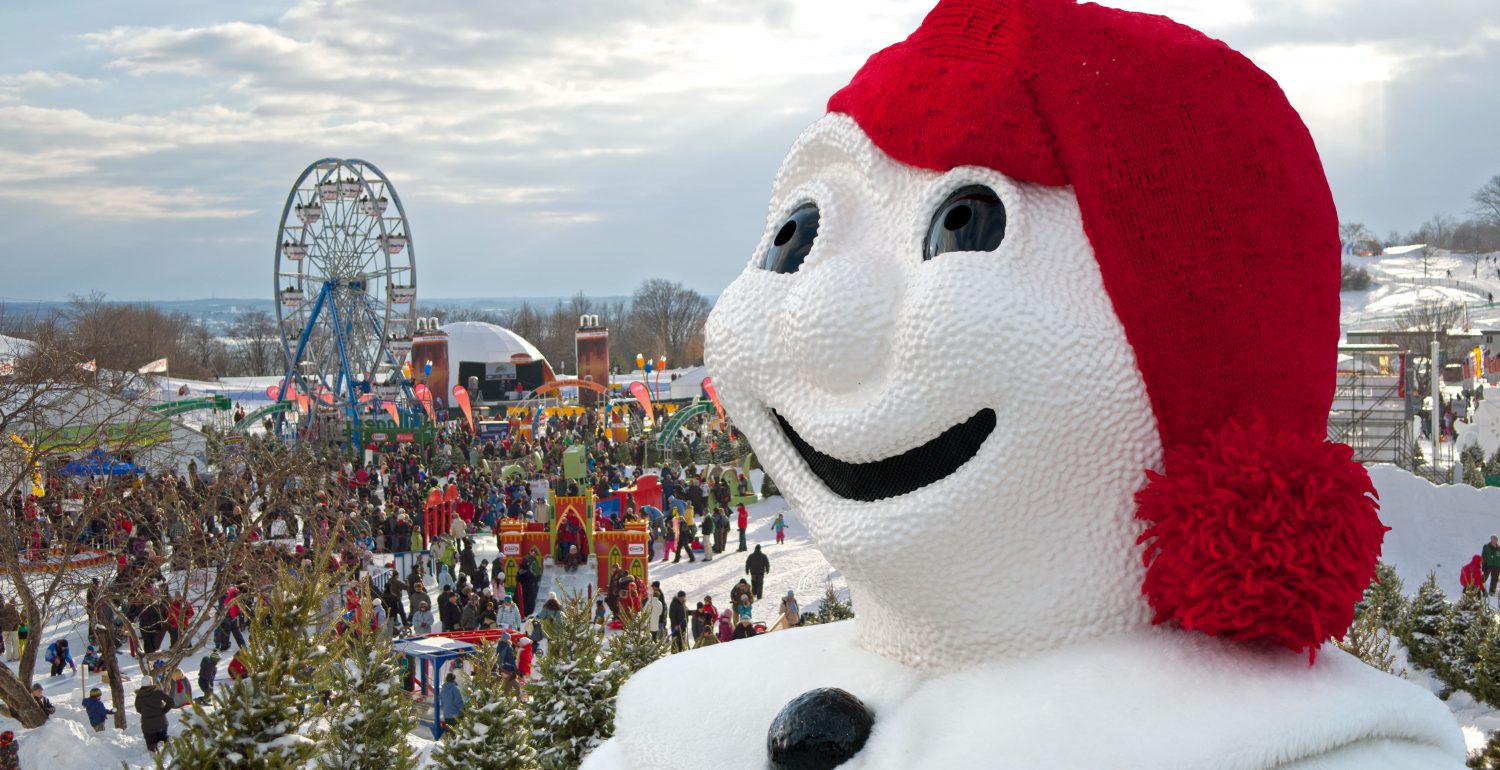The Quebec Winter Carnival: Celebrating winter for three generations

The Quebec Winter Carnival has been warming hearts during the cold season since 1955. The festivities transform Quebec City into the capital of snow and winter! From late January to mid-February, hundreds of thousands of people take part in competitions, outdoor activities and winter sports, often derived from Quebec traditions: ice canoe races, snowshoeing, dog sledding, snow sculptures and large parades of colourful floats. This major event, with the emblematic Bonhomme Carnaval as its mascot, offers a varied program to please both the young and the young at heart. Each year, the carnival gives residents of Quebec City and its visitors an opportunity to have an exceptional winter experience in a city whose beauty embellishes the festival.
To learn more…
A 21st century carnival
The carnival’s longevity stems from both popular support among Quebec City residents and the event’s traditional origins, which lend a definite charm for visitors who are less familiar with winter. The Quebec Winter Carnival also constantly adjusts to changes in customs and recreational pursuits, to the delight of participants from both within and outside the province. To please all types of audiences, warmer and more intimate activities that are smaller in scale have been added recently to the major events held on larger sites.
The most popular attractions include the colourful night parades, the ice canoe race and the snow sculpture competitions, with Canadian and international categories. The prestigious Grande Allée also attracts many people with its outdoor ice bars, music and giant-sized games. Everyone is invited to participate in sports challenges, including the coureurs des bois triathlon, axe throwing, the mechanical moose ride, the three-ski grand prix and other friendly competitions. The most courageous will no doubt want to take part in the traditional “snow bath,” clad only in bathing suits. Shivers are guaranteed!
The less adventurous can watch performances by storytellers, musicians and ice dancers, and demonstrations by lumberjacks. The family site includes activities tailored to children: sliding, skating, eating roasted marshmallows and maple taffy on snow. Nobody, however, should miss Bonhomme Carnaval’s impressive ice palace. This immense structure made of partially sculpted ice blocks, with its magnificent lighting, is a must-see.
The first winter carnivals in the Old Capital
In 1893, a group of businessmen decided to develop a large-scale attraction to bring in tourists during the off season. Their efforts resulted in the very first Quebec Winter Carnival, which was held in 1894.
An ice palace was built in front of the Quebec Parliament, and the streets were decorated with arches made from evergreen branches and enhanced by ice sculptures. The programming included a large masquerade ball on ice, a canoe race on the river and a parade of decorated floats. The experience was repeated in 1896, then several times over the ensuing decades, but the two World Wars and the Depression of the 1930s put a halt to the winter festivities.
Rebirth and evolution of a tradition
The idea of a winter carnival resurfaced in the 1950s. While Bonhomme Carnaval and his duchesses were innovations at the time, the organizers also relied on attractions that had proven their worth: the ice palace, the great parade of decorated floats, and the ice canoe race between Quebec City and Lévis, which were all part of this new edition of the revived carnival, in 1955.
From one winter to the next, the program was gradually enriched with additional winter activities and sports, often inspired by the traditional lifestyle of Quebecers. Other novelties, like the international snow sculpture competition and the snow bath with Bonhomme, made their appearance to provide the simple pleasure of “playing with winter”.
In the 1990s, after 40 years in existence, the carnival embraced new directions to keep up with societal changes. It refocused its activities on the family, and nearly all the festivities were brought together on an immense site located on the Plains of Abraham. Then, from 2014 on, the organization brought the celebrations back into the city streets, to better respond to the changing expectations of carnival lovers. The duchesses’ competition, for example, which had been set aside for several years, was updated to suit contemporary tastes and revived on the 60th anniversary of the carnival.
May the festivities continue!





